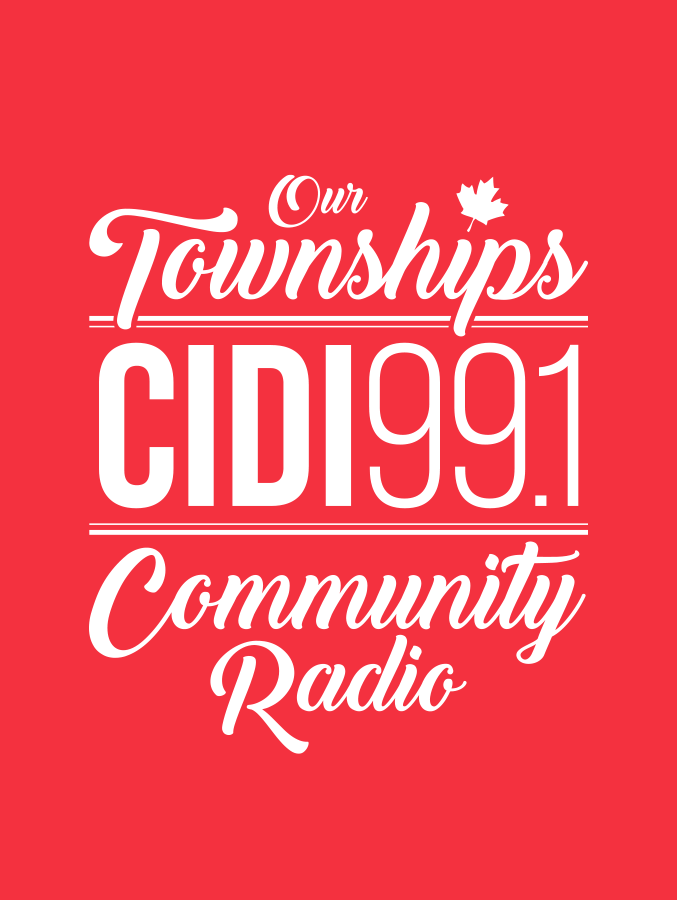L’Église de Sainte Étienne-de-Bolton
L’Église de Sainte-Étienne-de-Bolton turns 150 years old
L’Église de Sainte-Étienne-de-Bolton is celebrating 150 years of serving the community. Photo by Taylor McClure.
By Taylor McClure
Townships’ Daily News Bits
CIDI 99.1 FM
L’Église de Sainte-Étienne-de-Bolton is celebrating 150 years of serving the community. Built by five of the first settler families that came to the area from Saint-Charles, the Catholic church has been the centre of the community, physically and literally, since 1873. The church is overseen by the Sherbrooke and Diocese and the Notre Dame du Mont Carmel parish. They recently approached to the municipality to see if it would be interested in purchasing the historical structure for $1. The municipality has yet to make a decision, but they are hoping to preserve the structure and make it a viable space for the community.
“Right now, we are in the old church, which was built in 1850 on the other side of the road. In 1873, they began to build a big church. When it was done three years later, they moved the small church up to the hill to be next to the big church,” explained Emmanuelle Vincent-Racicot, member of L’Église de Sainte-Étienne-de-Bolton’s community animation team and management council. “The big church will be more than 150 years and the small church is more than 170 years right now.”
The parish continues to use the small church for its Sunday services and the big church has been transformed into a museum that highlights the families that contributed to the church and Sainte-Étienne-de-Bolton. The future of the church however, is currently hanging in the balance.
“What’s been happening in the past few months is the Diocese came forward to the municipality with an offer to purchase the building for $1,” explained James Penny, municipal councillor for Sainte-Étienne-de-Bolton. “We have been mulling over that at the town council. There hasn’t been a decision, I can’t say we are split down the middle, but we are discussing it.”
Penny explained that they brought in architects and engineers to put together a report on the physical condition of the church.
“The report came in in January and to put it up to municipal standards, because if we go ahead and buy the building it will become like a municipal building with all the codes and regulations, the first report we got from those engineers was $2 million,” said Penny. “We’ve been thinking if we do buy it, and the church assistance is going down, we need to have other use for the building.”
Ideas include making the space a community centre, but Penny noted this will add to the price tag.
“That’s why we are still undecided. We have three four options open to use to see what we are going to do,” he said.
These options include purchasing the building, leaving the future of the church in the hands of the diocese, or perhaps leasing the building from the diocese and slowly getting started with repairs. The municipality is also seeking funding to support its project.
“Actually, we are doing quite well at finding different avenues of financing projects and subsidies that are available for us, but it’s a difficult world to swim in. The more you find out, the more problems you have to put those programs into action,” noted Harry Bird, also a municipal councillor for Sainte-Étienne-de-Bolton.
Bird mentioned that he has been a resident of Sainte-Étienne-de-Bolton since the 80s and that activities were often carried out at the church.
“The challenge of buying the building and fixing it is one thing, getting something going on in the church and being viable is a whole other different thing. I believe if we work out a bit more, in a solid way, what we will do with the building, we will find our citizens are inclined to get involved and see this project take off the ground,” added Bird.
Taking into consideration the impact that the project would have on municipal taxes, Penny explained that the municipal council wants to be as transparent as possible and will be presenting the different options to the population over the next few months.
“It’s odd to hear people when you talk about this, it seems to be a split down the population - don’t want to spend anymore, cannot let this church go,” said Bird. “It’s a part of our logo, it’s in the middle of our logo, the town is all around it, and it’s also the first Catholic Church in the Townships."
A couple of weeks ago, Vincent-Racicot helped organized celebrations for the 150th anniversary and invited decedents of the settler families to take part.
“The roots are real deep here. (…) We were more than 130 and more would have been here if Covid didn’t ask them to stay home,” mentioned Vincent-Racicot. “The roots are deep and the history is so rich.”
For Vincent-Racicot, the celebrations made it clear how important the church is to the community.
“It is certain, that for many people, it is still the beating heart of the village,” she said.
Listen to the full interview below:

